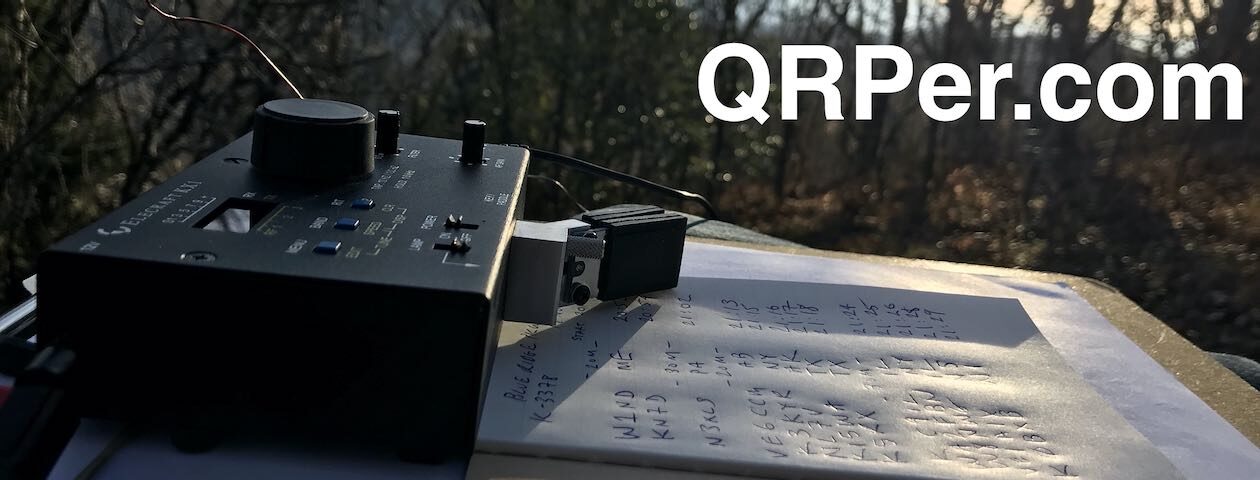Many thanks to Brian (K3ES) who shares the following guest post:

Activating Allegheny National Forest with Friends
by Brian (K3ES)
An Opportunity
I will confess. It has been a couple of weeks since I activated a park. With some much needed days of rain, and an otherwise busy schedule, things have conspired against me. So, when a bright, sunny day, without other pressing commitments came along, I jumped at the opportunity!
Mid-afternoon on Wednesday, July 5 was my time to head to the woods for a few hours. I decided to stay close to home to minimize travel time. In fact, a 10 minute walk up the road from my house gets me to a small piece of K-0619, Allegheny National Forest. I took my lightest kit, added a camping chair and water bottle as creature comforts, and slung it all over my shoulder for the trip to a favorite operating location.
Once there, I got out my throw line to get the antenna set up, but things did not quite work as planned. My toss sailed high, really high. So high, in fact, that the line was not long enough for the weight to return to the ground without taking the small storage bag for my arborist kit up in the air. Hmm… I tried some different fixes, including tying additional cordage to the storage bag and letting it rise into the air while the weight descended. Not sufficient.
Finally, I untied the tail end of the throw line from the storage bag (it normally stays tied, just in case the throw finds a branch that is a little high…), and let the weight drop. Then I had to coil the line up again for another throw. Fortunately, my second toss found a workable branch, and I got my antenna in the air. For this activation, I used a Packtenna 9:1 with a 71 ft radiating wire set up as an inverted V. Next, it was time to get my station set up, prepare my log, and start operating.

Activation
The solar forecast predicted best propagation on higher bands, so I decided to start my 5 watt CW activation on 15m. After 10 minutes of calling CQ POTA, with neither a response, nor an RBN spot, I moved to 17m. Once again, nothing, so I moved to 30m, where the RBN picked up my call, but it still took more than 20 minutes to log 2 contacts.
When activating on Wednesday afternoons, I try to stay away from the 20 and 40m bands, because CW frequencies fill up quickly when the CWT sprint starts at 1900z, but with just over 20 minutes until before the CWT started, I decided to see if I could pick up enough contacts on 40m to validate the activation. The 40m band has always been good to me. Even with the solar forecast predicting disaster, it still proved to be productive. I had 12 additional contacts in the log by 1859z, giving me more than enough to validate the activation.

While logging those contacts on 40m, which kept me focused and busy, I became the subject of some animated discussion among the local residents. I did not have time to do more than listen and glance, but I heard numerous snorts, and saw a few white tails raised in alarm. Several of the local deer were not pleased that I was intruding in their domain. Even so, I had a bit more time available, and decided to press on. Continue reading K3ES: Activating Allegheny National Forest with Friends



















































